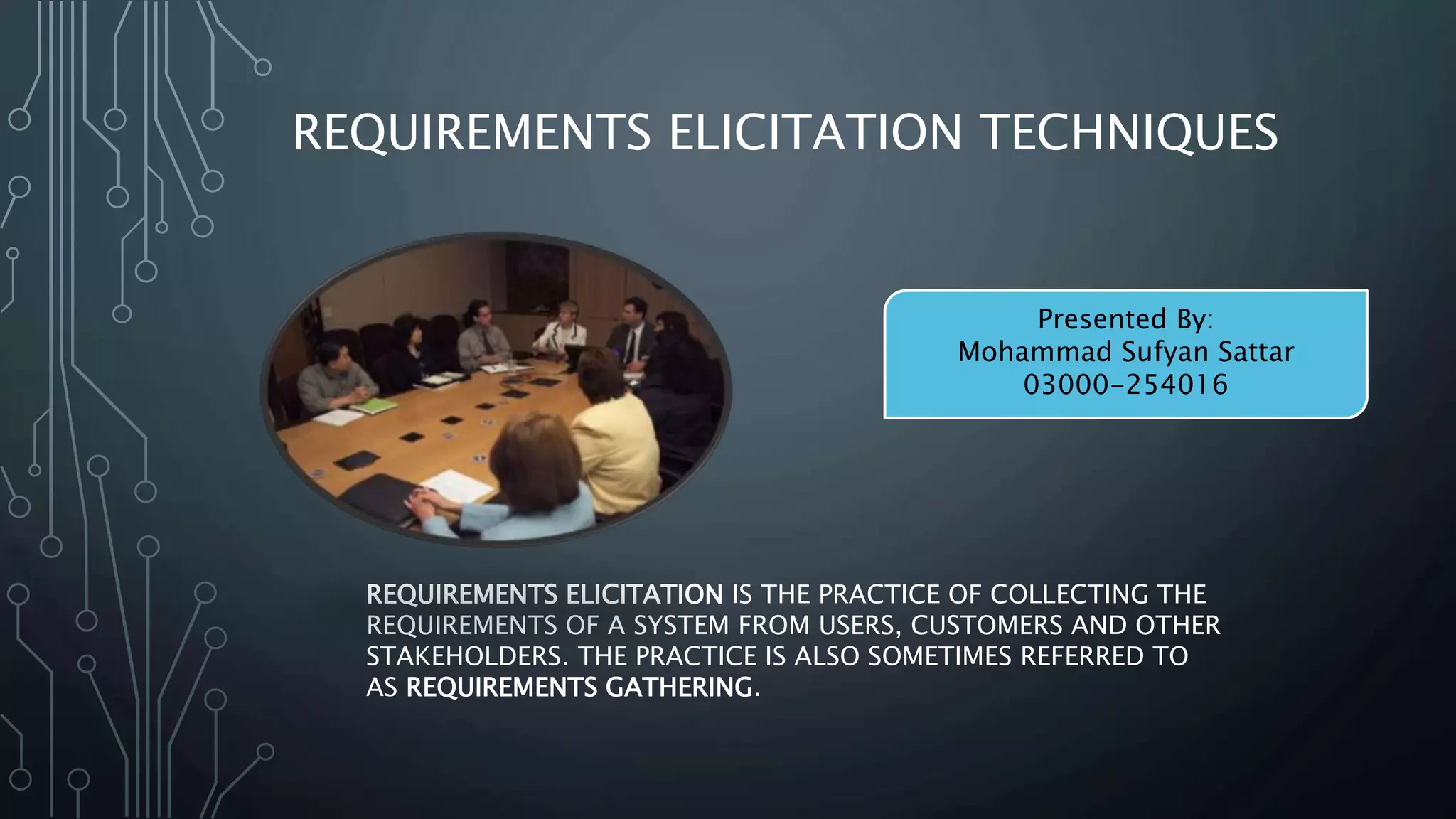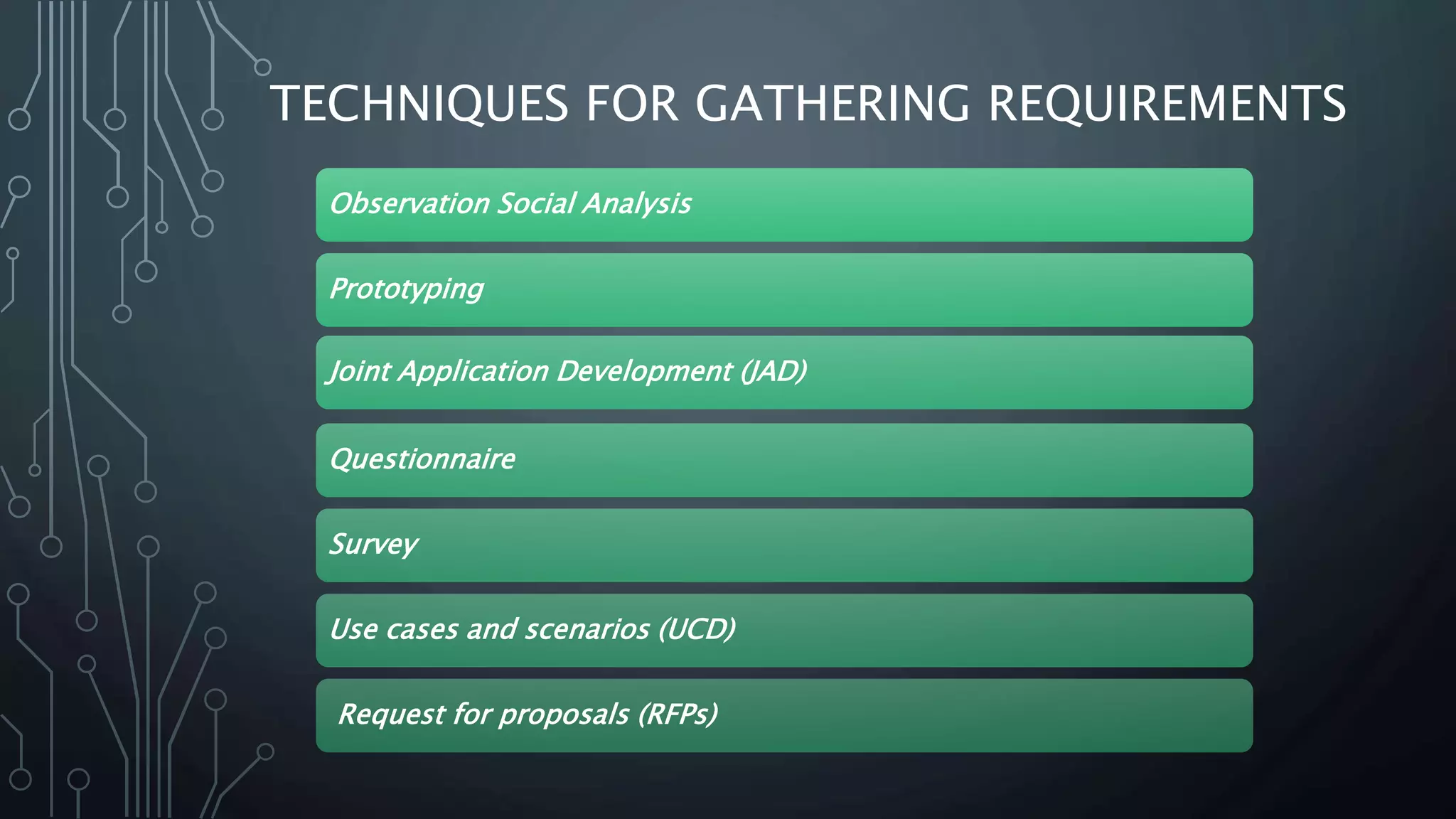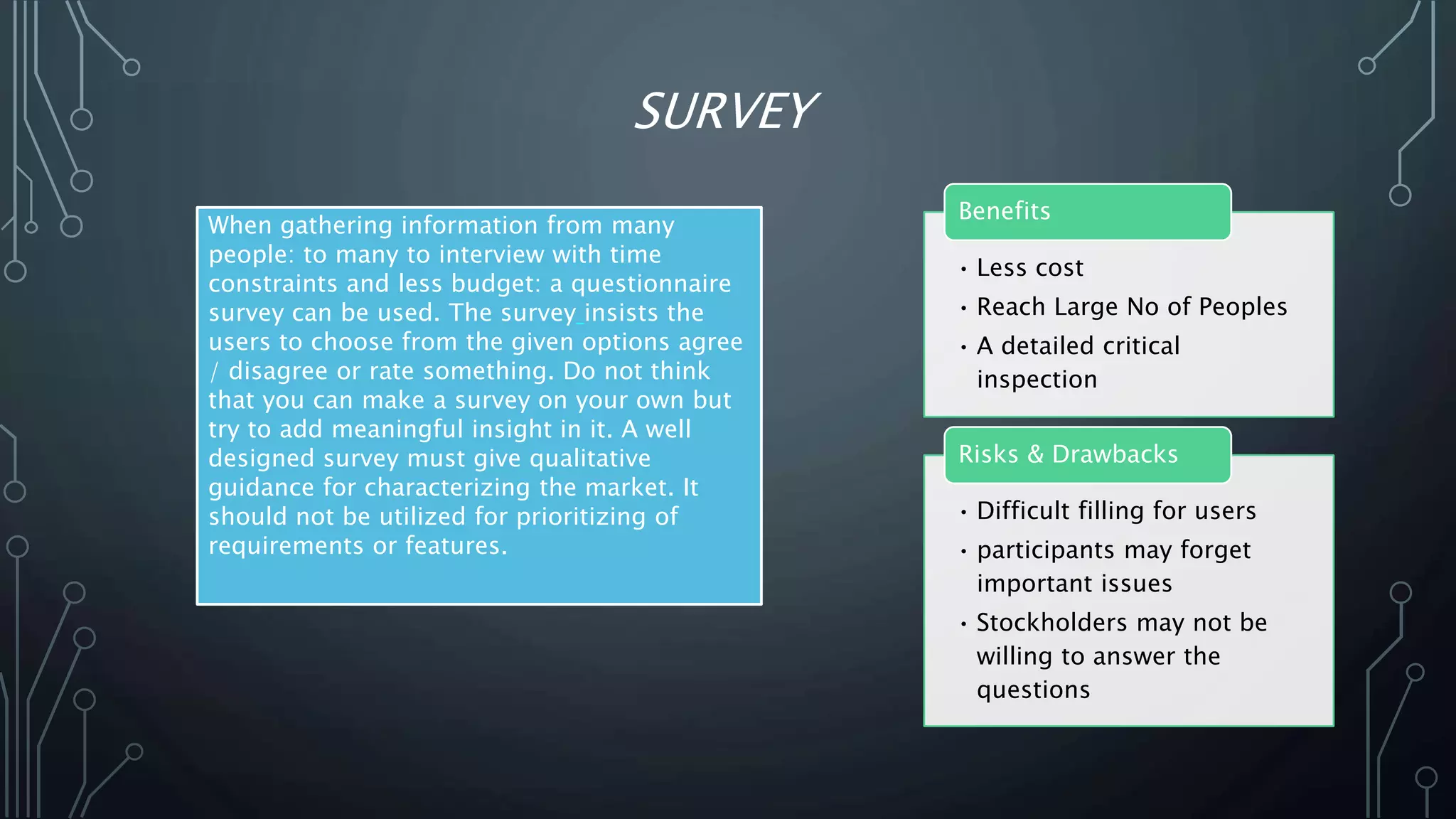The document discusses various techniques for requirements elicitation, which involves gathering system requirements from stakeholders. Techniques include stakeholder analysis, interviews, brainstorming, document analysis, and surveys, each with their own benefits and drawbacks. The text emphasizes the importance of selecting appropriate methods based on the context to ensure comprehensive and accurate requirement gathering.





















